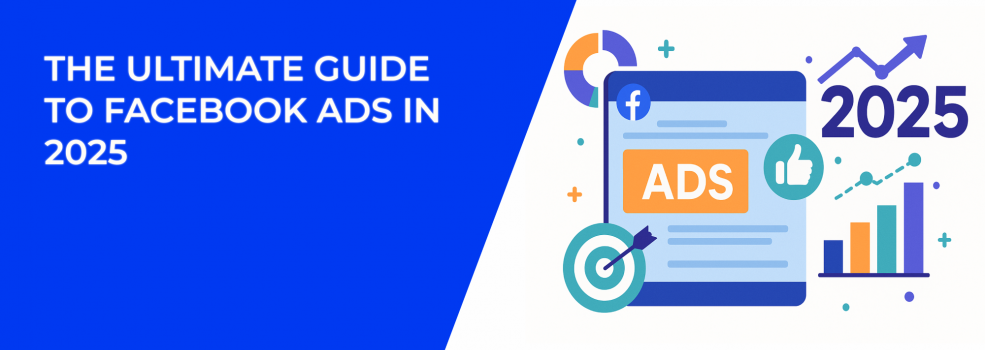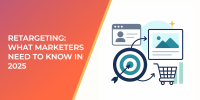Facebook Ads in 2025 remain one of the most reliable growth engines for businesses of all sizes. With Meta platforms hosting more than 3 billion monthly active users, the potential reach is massive. But with great opportunity comes great competition. Costs are rising, targeting is shifting due to privacy regulations, and creative expectations are higher than ever.
This guide walks you step by step through everything you need to know about Facebook Ads in 2025 — from setting objectives to optimizing campaigns — so you can build ads that don’t just get clicks but also drive real business results.
Why Facebook Ads Still Matter in 2025
Even with TikTok, YouTube Shorts, and new AI-driven ad networks stealing the spotlight, Facebook Ads continue to dominate for a few simple reasons:
-
Unmatched scale. Billions of people still log in to Facebook, Instagram, Messenger, and WhatsApp daily.
-
Detailed targeting. You can reach specific audiences based on interests, demographics, and behaviors.
-
Integrated ecosystem. Ads flow seamlessly across Meta platforms, giving businesses cross-channel exposure.
-
Diverse formats. From Reels to Carousels, Facebook Ads offer creative flexibility that few platforms can match.
For brands, this means you can connect with customers at every stage of the journey — awareness, consideration, purchase, and retention. The trick is understanding how to use the platform strategically.
Step 1: Define Crystal-Clear Campaign Objectives
In 2025, Facebook Ads Manager organizes campaigns around six primary objectives. Each one aligns with a specific stage of the customer journey — so choosing the right objective is critical to measuring success correctly.
The six campaign objectives in 2025:
-
Sales – Find people most likely to purchase your product or service. Best for conversions, catalog sales, and direct sales through messages.
-
Leads – Collect contact details through instant forms, calls, sign-ups, or conversations in Messenger/WhatsApp.
-
Engagement – Encourage interaction through post engagement, video views, Page likes, or event responses.
-
Traffic – Drive people to your website, app, or a Facebook event. This includes link clicks and landing page views.
-
Awareness – Build recognition by showing ads to people most likely to remember them. Often tied to brand awareness and video views.
-
App Promotion – Get new users to install or engage with your app. Useful for app installs and re-engagement campaigns.
Example: a SaaS company might choose Leads to collect email sign-ups with instant forms, while an online store would run a Sales campaign optimized for conversions and catalog purchases.
The golden rule is simple: pick the objective that directly matches your end goal. Don’t run an awareness campaign if what you really want is sales data.
If you’re still unsure which goal matches your business stage, check out our detailed guide on Meta ad campaign objectives.
Step 2: Master Audience Targeting in a Privacy-First World
Audience targeting is the heart of Facebook Ads — and also where most advertisers get stuck. With iOS updates and stricter data rules, you don’t get the same precision as before. But you still have powerful options.
Best practices for 2025 targeting:
-
Custom Audiences: Upload email lists, CRM data, or retarget website visitors. This is your most reliable data source.
-
Lookalike Audiences: Expand from your custom audiences to find people with similar behaviors. For instance, create a lookalike from your top 5% of customers by lifetime value.
-
Interest & Behavior Targeting: Still effective if you narrow down carefully. Instead of targeting “fitness,” target layered interests like “fitness + vegan recipes + online shoppers.”
-
Identity-Based Targeting: Use your first-party data — loyalty programs, past purchases, or app data — to fuel hyper-relevant audiences.
A golden rule: prioritize quality over size. A smaller, highly relevant audience often outperforms a broad one with wasted impressions.
For a step-by-step breakdown of targeting foundations, read our Facebook Ad Targeting 101.
Step 3: Pick the Right Ad Formats for Your Campaign
Meta offers a wide range of ad formats, and each one shines in different scenarios. Choosing the right format ensures your message gets delivered in the most effective way possible.
The main Facebook ad formats in 2025:
-
Image Ads – Clean and simple. Great for brand awareness or highlighting a single offer.
-
Video Ads – Excellent for storytelling, tutorials, or demonstrating products in action. Short-form videos in Reels are especially effective.
-
Stories Ads – Full-screen vertical ads that appear between user stories. Perfect for immersive, mobile-first experiences.
-
Carousel Ads – Multiple images or videos in a single ad. Ideal for showcasing product collections or step-by-step features.
-
Collection Ads – A cover image or video plus a product catalog. Best for e-commerce brands looking to drive direct sales.
-
Slideshow Ads – Lightweight, looping video-like ads built from images. Useful if video production isn’t feasible.
-
Messenger & WhatsApp Ads – Open direct conversations with customers. Works well for service-based businesses or high-ticket sales.
-
Reels Ads – Short-form video ads integrated into Reels on Facebook and Instagram. Excellent for top-of-funnel engagement.
Example: a local restaurant might use Stories Ads to show off daily specials, while an online retailer would benefit from Collection Ads that showcase product lines directly linked to purchase pages.
When selecting formats, match them to your objective. For example, if your goal is engagement, video or Reels ads are natural fits. If you want sales, collection or carousel ads help drive conversions.
Want a closer look at each format, with examples of when to use them? Explore our ultimate guide to Facebook ad formats.
Step 4: Structure Campaigns the Smart Way
Think of campaign structure as the skeleton of your strategy. If it’s weak, everything else collapses.
Recommended structure for 2025:
-
Prospecting Campaigns (Cold audiences): Introduce your brand. Use broad targeting or lookalikes. Keep creative bold and eye-catching.
-
Retargeting Campaigns (Warm audiences): Remind people who visited your site, watched videos, or engaged with posts. Use testimonials, case studies, or discounts here.
-
Retention Campaigns (Hot audiences): Target past buyers with upsells, bundles, or loyalty offers.
This layered approach keeps your messaging aligned with intent. You wouldn’t pitch a hard sale to someone who just discovered you yesterday — so don’t let your campaign structure do it either.
For a deeper dive into campaign hierarchy and setup, see our walkthrough on structuring Meta campaigns for performance.
Step 5: Design Creatives That Stop the Scroll
Creative is everything in 2025. With AI-generated content flooding feeds, originality and clarity stand out.
How to craft winning creatives:
-
Visuals: Bright colors, simple layouts, and short videos tend to grab attention fastest.
-
Copywriting: Focus on benefits, not features. Instead of “New software with advanced integrations,” say “Save 10 hours a week by automating your workflow.”
-
CTA: Keep it crystal clear. “Sign up today” or “Shop the collection” works better than vague phrases like “Learn more.”
-
Testing: Create multiple variations. Swap headlines, CTAs, or thumbnails to see what resonates.
Quick test: show your ad to someone unfamiliar with your brand. If they can’t explain what it’s about in 5 seconds, it needs simplifying.
If you need inspiration for messaging and visuals, check our guide on writing ad copy that converts.
Step 6: Tracking and Measurement in the Post-Pixel Era
Tracking is more complex in 2025, but it’s still possible to measure results accurately if you combine the right tools.
-
Facebook Pixel: Still relevant but limited on iOS.
-
Conversions API (CAPI): Server-side tracking that improves accuracy. Essential for most advertisers now.
-
Aggregated Event Measurement: Helps prioritize key conversion events.
-
First-party Data: Build your own data pipelines with CRM systems, loyalty programs, and newsletters.
Pro tip: Always track more than one metric. CTR might look good, but if ROAS is poor, the campaign isn’t delivering. Balance top-of-funnel metrics with bottom-line results.
Step 7: Smart Budgeting and Bidding Strategies
Budgets in 2025 require sharper planning than before. Costs per click and CPMs are rising, so efficiency matters.
Budgeting tips:
-
Start small — $20–$50 per ad set per day is enough for testing.
-
Allocate 70% of your spend to proven campaigns and 30% to experiments.
-
Scale only when you’ve validated ROAS over several days.
Also, budgeting is about more than spend — it’s about choosing the right bid strategy. Meta offers three types:
-
Spend-Based Bidding – Use your full budget for maximum results.
-
Highest Volume: Get the most conversions possible.
-
Highest Value: Prioritize higher-value purchases.
-
-
Goal-Based Bidding – Set efficiency targets.
-
Cost per Result Goal: Keep costs near a set average.
-
ROAS Goal: Aim for a consistent return on ad spend.
-
-
Manual Bidding – Set a strict bid cap in auctions. Best for advanced advertisers with strong data.
Quick guide:
-
Use spend-based for testing or scale.
-
Use goal-based when you know your profitability targets.
-
Use manual if you want maximum control.
Example: an online retailer might set a cost cap of $15 per purchase to maintain profitability while scaling.
Step 8: Stay Ahead of Trends
Facebook Ads don’t stand still. The features that work today may be outdated tomorrow.
In 2025, some trends are shaping the way forward:
-
AI-Generated Ads: Meta is pushing generative AI tools that create copy, images, and even video variants. Use them for testing, but add your own creative spin.
-
Short-Form Video Dominance: Reels are becoming central to ad strategies. If you’re not testing short videos, you’re missing out.
-
Cross-Platform Campaigns: Ads now span Facebook, Instagram, Messenger, and WhatsApp more fluidly.
-
Automation in Campaign Management: More machine learning means less manual control. Advertisers need to guide strategy rather than micromanage.
Staying flexible and adapting quickly is what will separate thriving campaigns from those that fade into the feed.
Common Mistakes to Avoid
Even seasoned advertisers fall into traps. In 2025, watch out for these pitfalls:
-
Targeting audiences that are too broad or too narrow. Going too broad wastes budget on people unlikely to convert, while going too narrow limits your reach and starves the algorithm of data. The sweet spot is a balanced audience size that lets Facebook optimize effectively.
-
Running one creative for too long and causing ad fatigue. Audiences get tired of seeing the same ad repeatedly. Performance often drops after a few weeks, so refresh headlines, visuals, or formats regularly to keep engagement high.
-
Ignoring the learning phase and making changes too quickly. Facebook’s algorithm needs time to optimize. If you pause, edit, or reset campaigns before enough data accumulates, you’ll disrupt the process and skew results. Patience in the first 7–10 days often pays off.
-
Over-focusing on vanity metrics like likes or clicks instead of revenue. Engagement is nice, but it doesn’t pay the bills. Keep your eyes on ROI, ROAS, or cost per conversion — the metrics that actually matter to your bottom line.
-
Failing to align creative with audience intent. Cold audiences need educational or entertaining content, while warm audiences respond better to proof and urgency. Using the wrong message for the wrong stage can kill performance.
-
Not testing enough variables. Relying on a single ad set or one creative is risky. Run multiple variations, then double down on the winners. Testing is what turns guesswork into strategy.
Avoiding these mistakes doesn’t just save budget — it ensures every dollar you spend is working toward growth.
Final Thoughts
Facebook Ads in 2025 are both exciting and demanding. Success doesn’t come from copying what worked last year. It comes from adapting to new rules, leveraging first-party data, creating scroll-stopping ads, and staying ahead of trends.
The platform is more competitive, but also more rewarding for advertisers who take the time to test, learn, and optimize.
So ask yourself: will you be the advertiser who blends into the feed, or the one who builds campaigns people actually want to engage with?

